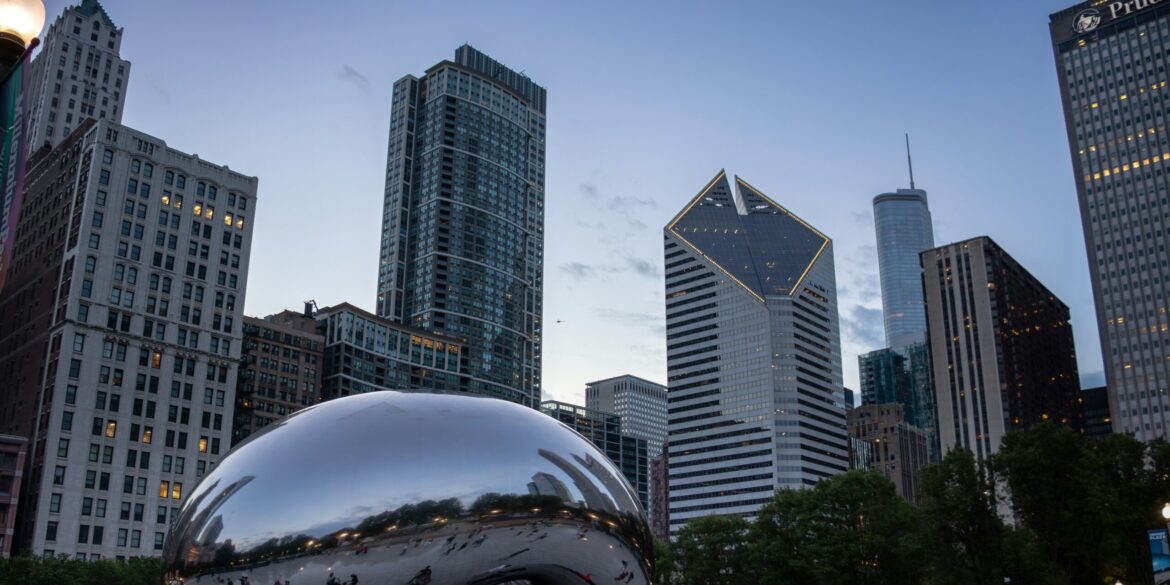On October 14, 2025, Chicago’s cultural landscape took a significant step forward with several new developments that are expected to shape the city’s future in both artistic and economic realms. Among the most anticipated announcements was the opening of a new Trader Joe’s store in the rapidly growing Fulton Market district. In addition to this commercial milestone, there were discussions about the city’s rising status as a vibrant artist destination, highlighting the growing interest in its galleries, cultural institutions, and creative spaces. These developments, which speak to Chicago’s evolving identity, have important implications for both the local economy and its cultural scene.
The opening of Trader Joe’s in the Fulton Market district is seen as more than just a retail expansion; it’s a symbol of the continued revitalization of this dynamic neighborhood. Known for its historic warehouses and former industrial spaces, the area has undergone substantial gentrification over the past decade, attracting a mix of innovative businesses, upscale restaurants, and a younger, more diverse crowd. The addition of a Trader Joe’s store, which is beloved for its affordable and unique grocery offerings, is expected to draw more visitors to the area. This move will likely boost the economic growth of Fulton Market, with increased foot traffic benefiting surrounding businesses and potentially spurring new developments in the area. The store’s opening marks a significant step in the transformation of Fulton Market into one of the city’s most desirable neighborhoods, blending a modern commercial atmosphere with Chicago’s historical roots.
Meanwhile, Chicago’s reputation as a burgeoning art destination has been gaining traction, and this shift is being recognized by both local artists and national observers. Despite challenges such as slower sales in the art market and the reduction of federal arts grants, the city has become an increasingly attractive location for artists of all kinds. Reports indicate that the interest in Chicago’s galleries and cultural institutions is rising, with the city being seen as a place where creativity can thrive in a supportive environment. This is partly due to the city’s strong community of artists, curators, and art enthusiasts, who have worked tirelessly to foster a collaborative and inclusive atmosphere. Chicago’s diverse cultural offerings, including everything from contemporary art to community-based initiatives, have created a fertile ground for creative expression and artistic experimentation.
One of the factors contributing to Chicago’s rise as an art destination is its deep historical roots in the cultural sphere, dating back to the 20th century. From the Chicago School of Architecture to the city’s jazz and blues legacy, Chicago has long been home to groundbreaking movements that have shaped the cultural landscape. Today, this legacy continues with a new generation of artists who are drawn to the city’s affordability, its wealth of spaces for creative expression, and its rich artistic history. Chicago offers a unique blend of large-scale institutions and smaller, independent galleries, which together create a diverse environment for both emerging and established artists.
Moreover, experts believe that Chicago’s supportive community has played a significant role in the city’s growing stature as an artist hub. In contrast to the high-cost environments of cities like New York and Los Angeles, Chicago offers artists the opportunity to live and work in a city that nurtures creativity without the pressure of exorbitant living expenses. The accessibility of both space and community support is an attractive factor for artists looking for a place to build their careers. Chicago’s relatively low-cost living, combined with its thriving arts scene, makes it an ideal location for artists seeking a balance between professional opportunities and a high quality of life.
Although the art world faces its own set of challenges, such as slower sales and the diminishing presence of federal arts funding, Chicago has shown remarkable resilience. The city’s ability to grow as an artist destination, even in the face of these setbacks, speaks to the strength of its local cultural scene. Many artists in the city have turned to alternative funding sources, including private grants, crowdfunding, and collaborations with local businesses and institutions, to support their work. The city’s commitment to fostering a thriving arts community, even amidst economic pressures, has helped sustain and grow the local art scene.
As Chicago’s cultural landscape continues to evolve, these developments signal a bright future for both the city’s artistic community and its economic growth. The opening of Trader Joe’s in Fulton Market and the city’s emergence as an artist destination are just the beginning of a larger movement. As Chicago becomes increasingly recognized as a center for creativity and innovation, it will likely continue to attract both visitors and residents looking to experience all that the city has to offer. Whether through its artistic venues, cultural institutions, or evolving neighborhoods, Chicago’s cultural scene is poised to become a central part of its identity, enhancing its position as one of the most exciting and diverse cities in the country.

